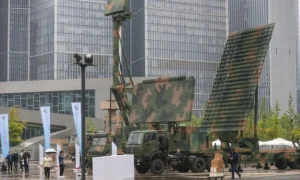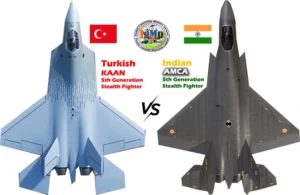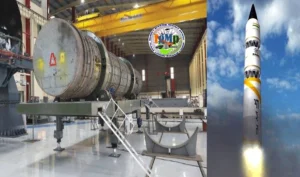Russia is testing its brand-new and multi-purpose unmanned single-use platform called ‘Scalpel,’ with drones becoming the weapon of choice in the ongoing war.
The Vostok Design Bureau (KB) conducted flight tests of the multi-purpose unmanned single-use platform Scalpel. The drone, which is to be introduced in combat in Ukraine, is expected to enter mass production from October 2023, Russian-language TASS News Agency reported.
“Flight tests of the multi-purpose disposable platform ‘Scalpel’ are underway. In the future, it is planned that units of the Russian Army will use the platform in special operations as loitering ammunition. In October, the finished product will be provided for use in the Northern Military District zone,” the agency quoted the design bureau as saying.
The manufacturer also added it had received applications for the platform from several Russian units and was engaging in dialogue with military personnel regarding the technical requirements for the aircraft. This may be the first time the Russian media has reported on this all-new kamikaze drone.
Earlier, however, some military bloggers who keenly follow the Ukraine war had published some information about the Scalpel. For example, military expert Samuel Bendett wrote on Platform X (previously Twitter) last month that the Scalpel seemed to be a copy of the ZALA Lancet drone, which is a Russian loitering munition extensively deployed against Ukraine in the ongoing war.
Bendett said that the Vostok Design Bureau had named its one-way UAV ‘Scalpel,’ which has the same meaning as ‘Lancet.’ He also highlighted that the bureau claimed that its drone was cheaper than the Lancet, which state arms manufacturer Rostec produces.
Subsequently, a video of what appeared to be the test launch of the Scalpel was also published. The drone could be seen being hand-launched by two crew members. EurAsian Times could not independently verify if it was indeed the Scalpel drone, which is currently undergoing testing.
Vostok claims its Scalpel drone can range up to 40km and carry a 5kg warhead. pic.twitter.com/kI04c5ppZr
— Samuel Bendett (@sambendett) August 10, 2023
The platform, meant for the Russian Army, is designed to have various warheads to accomplish different tasks. “We tried to make the platform as versatile as possible. The payload compartment is made with a diameter of 125 mm and a length of 650 mm, with the expectation that each unit will independently decide which warhead to deploy based on its capabilities,” the statement said.
Another video of Scalpel drone launch. https://t.co/WBzasTtrAj pic.twitter.com/xHBbo8QnMt
— Samuel Bendett (@sambendett) August 11, 2023
The platform’s payload is pegged at 5 kilograms, has a take-off weight of 10.5 kilograms, a cruising speed of 120 kilometers/hour, and a flight range of 40 kilometers. Although the developer has repeatedly vouched for the low cost of the drone, which may also be a defining feature for the Russian Army as it continues to launch kamikaze drones in Ukraine, the exact price of the product was not disclosed.
“The platform will have an affordable price. Some components of the device are foreign-made, but to a high degree, it is a Russian product. The platform is distinguished by its compact size for such a payload weight, maximum energy efficiency, and ease of manufacture and use,” the developer of the UAV noted.
Russia’s Continuing Drone Attacks on Ukraine
Almost a year after Russia first intensified the use of kamikaze drones to strike targets inside Ukraine, suicide strikes have become an intrinsic part of Russian raids in the ongoing war. Despite media reports from Ukraine suggesting that Moscow has run out of their cheap and expendable UAVs, the Russian kamikaze drone raids have refused to abate.
In Russia’s aerial strikes against Ukraine, two drones have emerged as the most commonly used — the Iranian Shahed-class drones and Russia’s homegrown ZALA Lancet loitering munitions. The latter is known for obliterating Ukrainian tanks and other military vehicles and has caught the global limelight.
Recently, Ukrainian drone attacks on Russian territory have made the most headlines. However, every other day, Moscow’s troops carry out aerial strikes with its missiles and kamikaze drones that wreak havoc across Ukraine.

For instance, earlier this week, Russian drone assaults on a port sector in the southwest Ukrainian province of Odesa resulted in the death of one person. Oleg Kiper, regional governor, reported the attacks on Odesa’s Izmail district during the nighttime on the Telegram messaging app early on September 6.
According to the Ukrainian Air Force, 23 of the 33 air weapons that Russia had launched in the country had been destroyed by aerial defense systems. These included one Iskander ballistic missile, seven cruise missiles, and 25 Shahed drones acquired from Russian ally Iran.
Moreover, in another episode that has created a widespread controversy and raised fear of escalation, Romania’s defense minister Angel Tîlvăr announced that pieces of a drone from Russia’s recent attacks on the Danube River port of Ukraine had been discovered on his nation’s soil. A NATO member, Romania could invoke the collective security clause if such incidents trigger concerns.
“I confirm that in this area, pieces that may be of a drone were found,” he said, adding that the pieces didn’t pose a threat. Soon after the confirmation was made in Romania, NATO countries pledged full solidarity with the state, and NATO launched an investigation. However, there was no escalation between the two parties.
With another one-way use drone set to enter mass production, Russian capability to launch aerial drone strikes will further be bolstered, causing more trouble for Ukraine’s already overworked air defenses.
Source link
#Russias #Fit #Warhead #Suicide #Drone #Scalpel







